The High Frontier: Human Colonies in Space
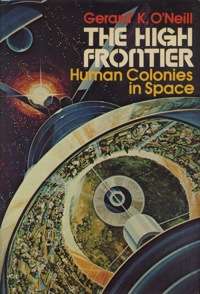 First edition cover | |
| Author | Gerard K. O'Neill |
|---|---|
| Cover artist | Rick Guidice |
| Country | United States |
| Subject | Space colonization |
| Publisher | William Morrow and Company |
Publication date | 1977 |
| Media type | Print (Hardcover) |
| Pages | 288 pp (first edition) |
| ISBN | 0-688-03133-1 |
| OCLC | 2388134 |
| 609/.99 | |
| LC Class | TL795.7 .O53 1977 |
The High Frontier: Human Colonies in Space is a 1976 book by Gerard K. O'Neill, a road map for what the United States might do in outer space after the Apollo program, the drive to place a man on the Moon and beyond. It envisions large manned habitats in the Earth-Moon system, especially near stable Lagrangian points. Three designs are proposed: Island one (a modified Bernal sphere), Island two (a Stanford torus), and Island 3, two O'Neill cylinders. These would be constructed using raw materials from the lunar surface launched into space using a mass driver and from near-Earth asteroids. The habitats were to spin for simulated gravity and be illuminated and powered by the sun. Solar power satellites were proposed as a possible industry to support the habitats.
The book won the 1977 Phi Beta Kappa Award in Science.[1]
Illustrations
The book featured impressions of life in outer space by a number of artists including Don Davis, Rick Guidice, and Chesley Bonestell.

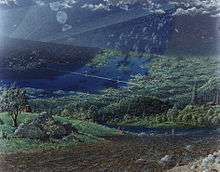 Interior of an O'Neill cylinder
Interior of an O'Neill cylinder Interior of an O'Neill cylinder
Interior of an O'Neill cylinder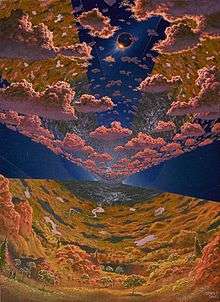 Solar eclipse inside an O'Neill cylinder
Solar eclipse inside an O'Neill cylinder Interior of a Bernal sphere
Interior of a Bernal sphere Cutaway of a Bernal sphere
Cutaway of a Bernal sphere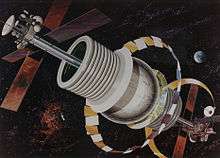 Exterior of a Bernal sphere
Exterior of a Bernal sphere Exterior of a Bernal sphere
Exterior of a Bernal sphere Agricultural module of a Bernal sphere
Agricultural module of a Bernal sphere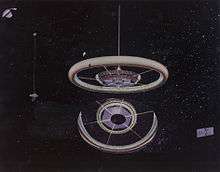 The Stanford torus and its mirror
The Stanford torus and its mirror Stanford torus under construction
Stanford torus under construction Stanford torus cutaway view
Stanford torus cutaway view Interior of a Stanford torus
Interior of a Stanford torus Lunar mass driver powered by solar panels.
Lunar mass driver powered by solar panels. Solar power satellite built from an asteroid with a Bernal sphere in the bottom right corner.
Solar power satellite built from an asteroid with a Bernal sphere in the bottom right corner.
In popular culture
Many of the concepts illustrated in The High Frontier can be seen in the early series of the anime franchise Mobile Suit Gundam, which depicts a world where humans have migrated into space colonies. The O'Neill cylinder colony design appears frequently, largely unchanged from its original concept.[2] The main space station in the popular TV series, Babylon 5, is similar to an O'Neill cylinder, but with internal lighting replacing the windows and mirrors.
Criticism
Science fiction writer Charles Stross wrote a critical essay with a similar title on the feasibility of interstellar space travel and making practical use of various moons and planets in the Solar System: The High Frontier: Redux.[3] Stross's criticisms do not directly apply to the O'Neill's "High Frontier" document about colonizing interplanetary space.
See also
References
- ↑ "Phi Beta Kappa Award in Science Winners". Phi Beta Kappa Society. 2007. Retrieved 2008-08-29.
- ↑ "Frequently Asked Questions: Time and Space". GundamOfficial. July 16, 2003. Retrieved 2008-09-10.
- ↑ "The High Frontier: Redux". June 16, 2007. Retrieved 2009-09-26.